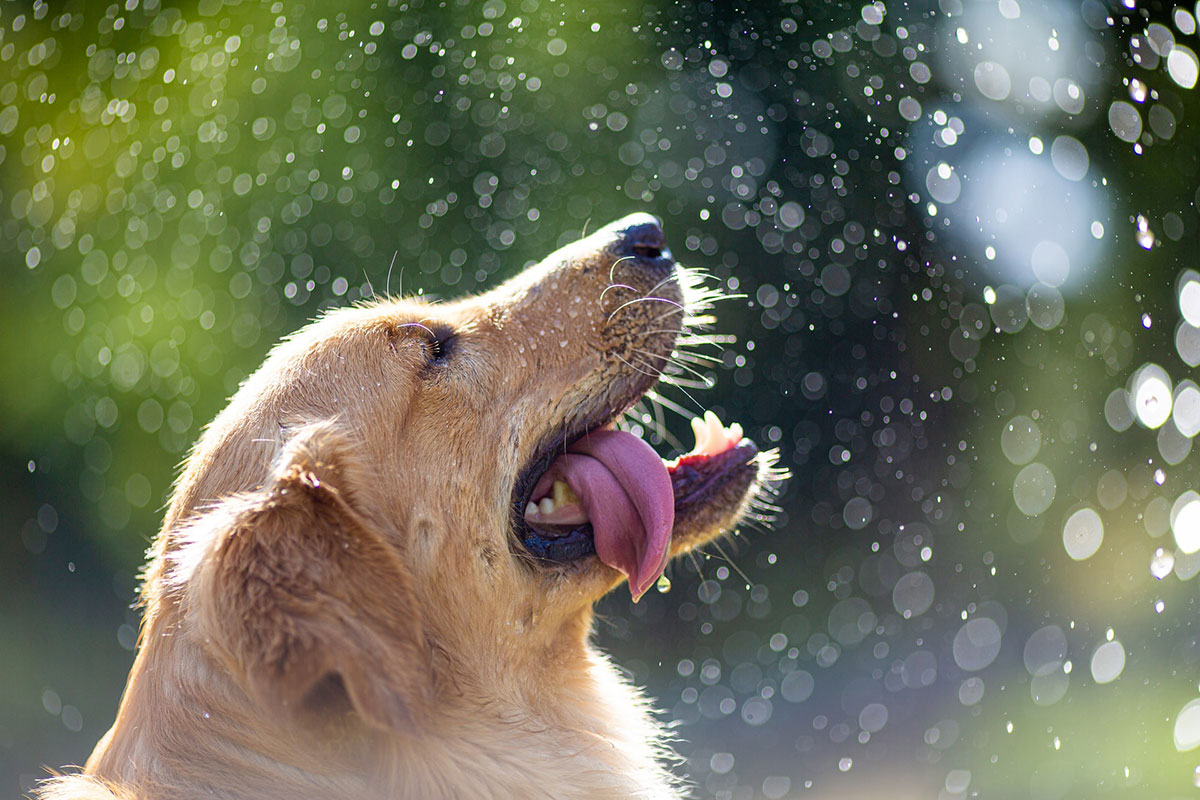Many dog owners get frustrated with excessive barking, often linked to seasonal changes. Barking is a natural way for dogs to communicate. But, when it’s too much, it might signal deeper issues.
As a dog owner with multiple pets, you might wonder why your dogs bark more during certain times of the year. Knowing the reasons for dog barking and using good dog barking management can really help. It can make your life easier.
Key Takeaways
- Understanding the reasons behind seasonal barking
- Identifying triggers that cause excessive barking
- Implementing effective dog barking management techniques
- Creating a more peaceful environment for you and your pets
- Recognizing the importance of addressing underlying issues
The Science Behind Seasonal Barking in Dogs
The changing seasons can deeply affect dog behavior, like barking. As their environment changes, dogs may become more alert or reactive.
In different seasons, various things can make dogs bark more. For example, in seasons with more outdoor activities, dogs bark more due to increased noises and visitors. A study on how seasonal changes affect pets shows that environment greatly influences dog behavior.
Knowing what makes dogs bark more in different seasons is key for dog owners. By understanding these barking triggers, owners can take steps to reduce excessive barking.
Spring Barking Patterns: New Stimuli Everywhere
When spring arrives, dogs may bark more. This is because of the new sights, sounds, and smells outside. More people and noises can make dogs more reactive.
Desensitization and counterconditioning help manage these triggers. Desensitization means slowly introducing the dog to the cause of barking. Counterconditioning pairs this with something good, like treats, to change how the dog feels.
Spring also brings more chances to play outside with your dog. Regular exercise and mental stimulation can help reduce barking. Activities like agility training, scent work, or longer walks are great.
Keeping a consistent routine helps your dog feel stable. This means regular times for eating, playing, and sleeping.
- Identify and manage triggers
- Use desensitization and counterconditioning techniques
- Increase exercise and mental stimulation
- Maintain a consistent daily routine
By using these strategies, dog owners can help their dogs bark less in the spring.
Summer Barking Issues: Heat and Outdoor Activity
The warmer months can be tough for dog owners. Their pets bark more because of the heat and outdoor sights and sounds. Summer brings more barking due to the increased sensory experiences and activities.
Factors Contributing to Summer Barking
- Heat stress and discomfort
- Increased outdoor activities and stimuli
- More time spent outdoors, potentially encountering more people, animals, and noises
To tackle summer barking, we must address the heat and outdoor activities. Keeping your dog cool and comfortable can lessen heat stress. Also, calm activities during the hottest hours can reduce barking caused by outdoor noises.
| Summer Barking Management Tips | Description |
|---|---|
| Provide a Cool Environment | Ensure your dog has access to a cool, shaded area or air-conditioned space to reduce heat stress. |
| Relaxing Activities | Engage your dog in calm activities during the hottest parts of the day to reduce barking. |
| Training | Reinforce training commands to distract your dog from outdoor stimuli. |
Understanding summer barking causes and using these tips can help dog owners manage their pets’ barking in the warmer months.
Fall Barking Behaviors: Changing Routines
When fall arrives, dog owners often see a change in their pet’s barking. This is because of the shift from summer’s easy-going days to fall’s more set routine. Dogs may find it hard to adjust, leading to more barking.
The environment changes too. Leaves falling, new smells, and different noises excite a dog’s senses, making them bark more. Also, when school and work start again, dogs may feel left out. This can cause separation anxiety and more barking.
- Keep a regular daily routine to make your dog feel secure.
- Give your dog more exercise and mental games in the fall to keep them busy and relaxed.
- Look into training methods to handle barking caused by fall sounds.
It’s important to be patient and understanding. Dogs take time to get used to the new season. A calm and cozy home can help reduce barking.
By understanding the fall season’s challenges and using strategies to manage barking, you can make your home a happier place for your dog.
Winter Barking Challenges: Confinement and Boredom
The cold winter months can lead to increased barking in dogs. This is mainly because of the confinement and lack of stimulation. Dogs are often kept indoors more, leading to boredom and frustration.
Dogs need both mental and physical stimulation. When they’re stuck indoors for too long, they get restless. This restlessness often shows up as excessive barking.
To tackle winter barking challenges, dog owners can try a few things. Providing indoor activities and toys can keep dogs engaged. Some effective methods include:
- Interactive puzzle toys filled with treats
- Indoor obedience training sessions
- Scent games that mimic hunting activities
Indoor Activities to Reduce Barking
| Activity | Description | Benefits |
|---|---|---|
| Indoor Fetch | Throw a ball or toy down a hallway or room | Physical exercise, reduces boredom |
| Scent Work | Hide treats or toys with a strong scent for your dog to find | Mental stimulation, engages sense of smell |
| Trick Training | Teach new tricks or commands indoors | Mental stimulation, strengthens bond |
By understanding the causes of winter barking and implementing strategies, dog owners can create a more harmonious home. This is for both themselves and their pets.
Why Dogs Bark More in Different Seasons and How to Manage It: A Comprehensive Overview
Understanding why dogs bark more in different seasons is key to managing their barking. Various factors contribute to this behavior, including changes in environment, stimuli, and routine.
Seasonal Changes and Dog Behavior: Each season presents unique challenges that can make dogs bark more. Spring brings new sights and sounds. Summer is hot and dogs are more active outdoors. Fall changes routines, and winter keeps dogs indoors.

To manage seasonal barking, address these factors. A good plan includes training, making environmental changes, and ensuring dogs get enough exercise and mental stimulation.
| Season | Common Barking Triggers | Management Strategies |
|---|---|---|
| Spring | New stimuli, increased outdoor activity | Training, increased exercise, mental stimulation |
| Summer | Heat, outdoor noises | Cooling measures, noise reduction techniques |
| Fall | Changing routines, new smells | Maintaining routine, desensitization to new smells |
| Winter | Confinement, boredom | Indoor activities, interactive toys |
By understanding the causes of seasonal barking and using these strategies, dog owners can manage their dog’s behavior all year.
Apartment Living and Seasonal Barking Challenges
Living in an apartment can be tough for dog owners, mainly because of seasonal barking. Dogs may bark more with the seasons changing. This is because of new sounds, animals, and changes in their owner’s schedule.
For those living in apartments, barking can be a big problem. It’s because you’re closer to your neighbors. Managing barking in an apartment needs careful thought. You must consider the apartment’s challenges and how seasons can make dogs bark more.
| Season | Common Barking Triggers | Management Strategies |
|---|---|---|
| Spring | New noises, increased outdoor activity | Provide indoor activities, white noise machines |
| Summer | Heat, outdoor noises | Keep dogs cool, use calming aids |
| Fall | Changing routines, new smells | Maintain consistent routines, provide mental stimulation |
| Winter | Confinement, boredom | Increase exercise, provide indoor games |
Understanding what makes dogs bark more in different seasons helps. Apartment dog owners can lessen barking. This makes living together more peaceful.
Senior Dogs and Seasonal Sensitivity
As dogs get older, they can become more sensitive to the seasons. This often leads to changes in how they bark. Senior dogs may react more to things that happen in different seasons.
Seasonal changes can be tough for senior dogs. For example, spring brings more noise from lawn care and construction. This can scare or stress them, causing them to bark more. Summer’s increased outdoor activity can also be too much. Fall’s changing routines and winter’s cold can make them bark too.
To help senior dogs, owners can take a few steps. Keeping a consistent routine helps them feel stable and comfortable. This means regular meals, exercise, and playtime. Also, having a quiet, comfortable space for them to go to when they’re overwhelmed is good.
Other strategies include:
- Limiting their exposure to things that make them bark, like blocking windows.
- Using calming aids like pheromone diffusers, calming treats, or music for dogs.
- Keeping them busy with gentle, mentally stimulating activities to reduce stress.
Understanding how seasons affect senior dogs and using strategies to help them can reduce barking. It can also improve their overall happiness and well-being.
Creating a Year-Round Barking Management Plan
A good barking management plan can really help reduce dog barking. First, dog owners need to figure out why their dog barks. Then, they should come up with strategies for different seasons.
Assessing the Environment and Dog’s Needs is key. It means finding out what makes the dog bark, like noises or visitors. It also means knowing how these things change with the seasons.
A good plan should include training techniques that fit the dog’s needs and the season’s challenges. For example, in spring, when there are lots of new things to see and hear, training should help the dog get used to these.

Using year-round strategies like regular walks, mental games, and consistent training can help. It’s also important to watch how the dog reacts to the plan and make changes if needed.
By being proactive and flexible with barking management, dog owners can make their homes more peaceful for everyone.
- Identify barking triggers
- Develop season-specific strategies
- Incorporate consistent training and exercise
- Monitor and adjust the plan as needed
Creating such a plan takes dedication and patience. But, the effort is worth it: less barking and a quieter home.
Seasonal Training Techniques to Reduce Excessive Barking
Dogs bark more in certain seasons due to various stimuli. Using effective training strategies can help reduce this. Training is key in managing barking. By using seasonal training techniques, you can lessen your dog’s excessive barking.
Mental Stimulation Games
Mental stimulation is vital for reducing barking caused by boredom or excess energy. Engage your dog with interactive puzzle toys and scent games. These games challenge their minds and keep them busy.
For example, hiding treats around the house or yard makes your dog sniff and solve problems. This reduces barking caused by boredom.
- Interactive puzzle toys filled with treats
- Scent games that utilize your dog’s sense of smell
- Hide-and-seek games that provide mental stimulation
Physical Exercise Alternatives
Physical exercise is also crucial as it burns off excess energy that leads to barking. You can adjust the type and duration of exercise based on the season. For example, in colder months, try treadmill training or indoor fetch.
In warmer seasons, outdoor activities like long walks or jogging help expend energy.
- Indoor fetch or hide-and-seek during winter
- Treadmill training for dogs
- Outdoor activities like jogging or long walks in warmer seasons
For more tips on managing your dog’s barking, visit Barking Batty for comprehensive guidance.
When to Seek Professional Help for Seasonal Barking
Many dog owners can handle their pet’s seasonal barking at home. But, some may need professional help. If your dog’s barking doesn’t get better, it’s time to seek professional help.
Here are some signs you might need professional help:
- Persistent barking that disrupts daily life
- Barking accompanied by other behavioral issues
- Lack of response to home training methods
For expert advice, check out Barking Batty. Their professionals can give you specific tips to manage your dog’s barking.
Living Harmoniously Through the Seasons: A Balanced Approach
Living with dogs through the seasons requires a balanced approach. It’s important to understand that changes in weather can make dogs bark more. By knowing why dogs bark in different seasons, owners can find ways to reduce it.
A balanced approach means using training, adjusting the environment, and paying attention to a dog’s needs. For example, more exercise and mental games in winter can help. Also, being ready for new sights and sounds in spring and adjusting routines in fall can help manage barking.
By taking this balanced approach, owners can have a quieter home all year. It’s about being ready and responding to a dog’s needs as the seasons change. With the right steps, living with dogs can be happy and stress-free.






